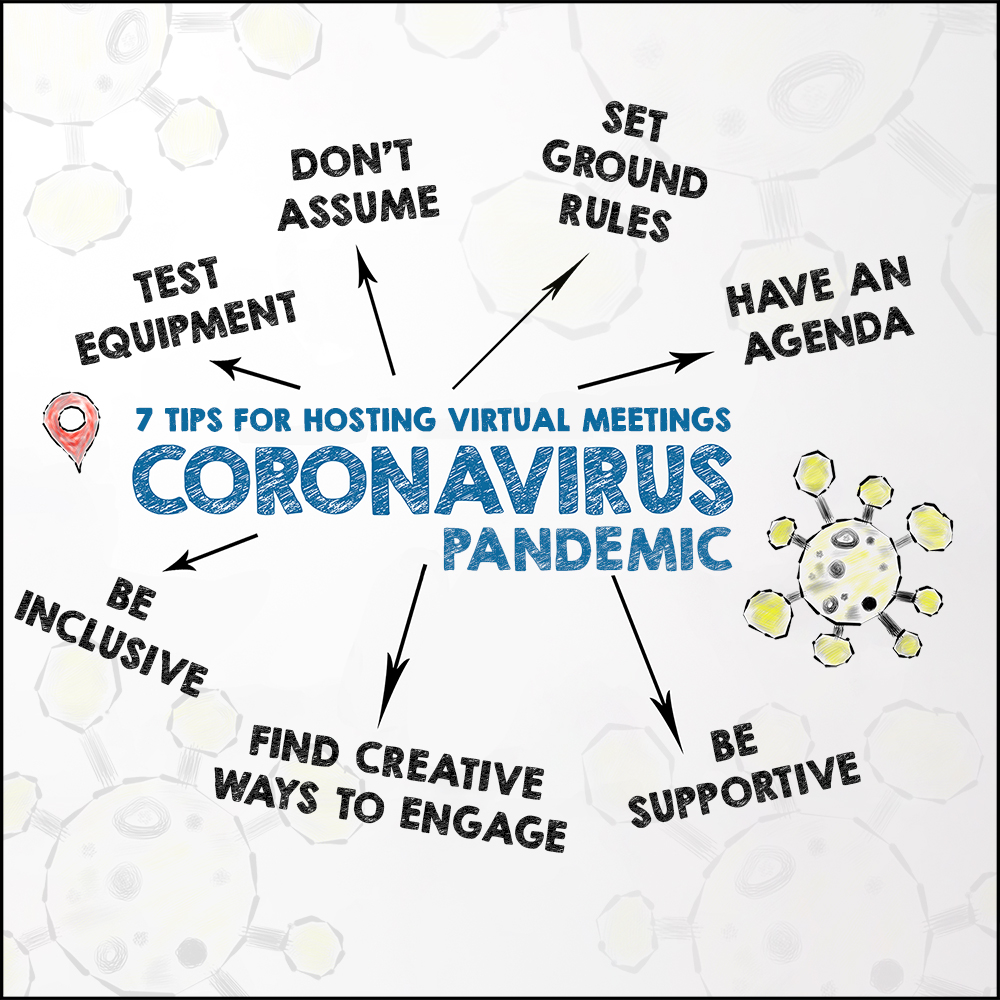7 Tips for Hosting Virtual Meetings
In the first quarter of 2020, we have experienced an unprecedented change in how we communicate. For many, the preferred method of communication has been in-person. Then, on March 11, 2020, coronavirus (COVID-19) was declared a global pandemic by the World Health Organization (W.H.O.). Institutions across the globe have temporarily closed from churches in Rome and synagogues in Israel to law firms, schools and universities around the world.
In light of these closures and the Centers for Disease Control and Prevention (CDC’s) guidelines for social distancing, we have compiled tips for how to capitalize on virtual meetings.

Test Equipment
In anticipation of working remotely, ask employees to test their equipment at home to ensure that they have adequate WiFi, can connect to the company’s video conferencing tools, and confirm that video and audio are working. Consider holding a test meeting.
Don’t Assume
With five generations currently in the workforce, meeting participants are likely at different levels of comfort with technology. Provide employees with a checklist regarding how to test their equipment. Help to prepare employees with best practices for virtual meetings and provide resources to assist employees who run into difficulty during setup or testing.
Set Ground Rules
As a team or as a team leader, set ground rules for your meetings to help team members stay focused and to keep the meetings efficient. Rules can include no checking emails, no multi-tasking, and using the mute button unless you are speaking to minimize background noise.
Have an Agenda
Circulate an agenda in advance to allow participants time to prepare and collect their thoughts as well as any supporting information or documentation. The agenda should include the goals for the meeting so participants understand what the group is working to accomplish during that time. It is also helpful to restate the meeting goals at the onset of the call.
Be Inclusive
Designate a participant or moderator to call on individuals by name to participate in the conversation or share their thoughts. This is especially helpful to engage more quiet, soft-spoken or introverted participants.
Find Creative Ways to Engage
For larger teams, it may not be realistic to call on each participant by name. Utilize voting or brainstorming tools to allow participants to share their feedback in a streamlined way.
Be Supportive
We are in uncertain times. Everyone reacts to situations differently and is informed by their own experiences including their cultures, religious beliefs, lifestyle, etc. It is easy to forget that our perspectives and stress levels vary as do our ways for dealing with challenges. You should offer support and encouragement for your team, acknowledge the situation, demonstrate gratitude for their flexibility, and continue to lead by example from your remote meeting location.
On a final note, one the best pieces of advice I have ever received is to assume good intent. (Thank you, Legal Marketing Association.) View comments, recommendations, feedback and thoughts that your team members share with the belief that they are shared with good intent. This is especially good advice as we navigate today’s reality, which is changing by the minute.
For more coronavirus resources, please visit our Coronavirus (COVID-19) Crisis & PR Resource Center.
